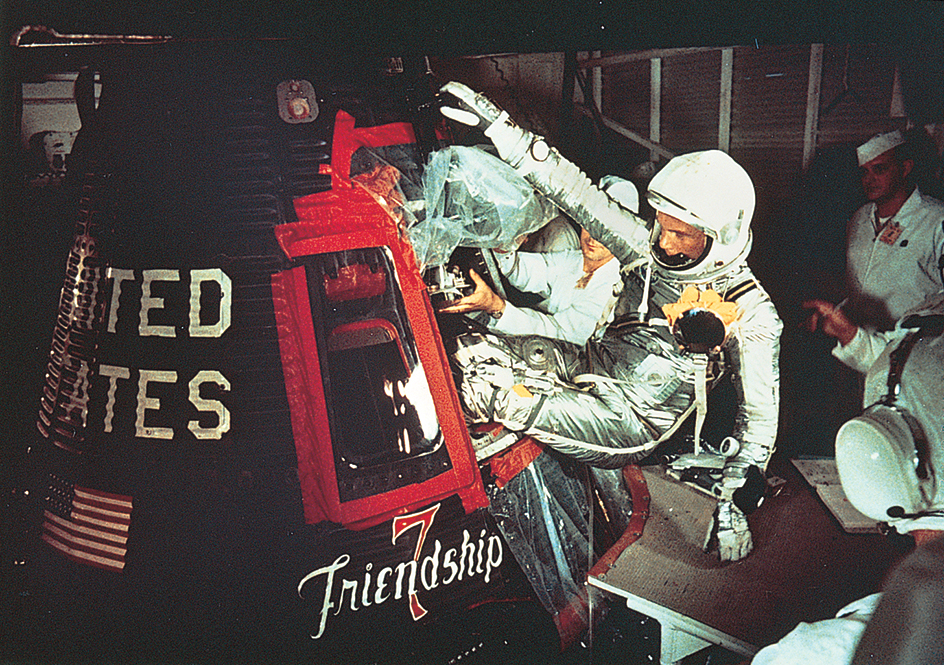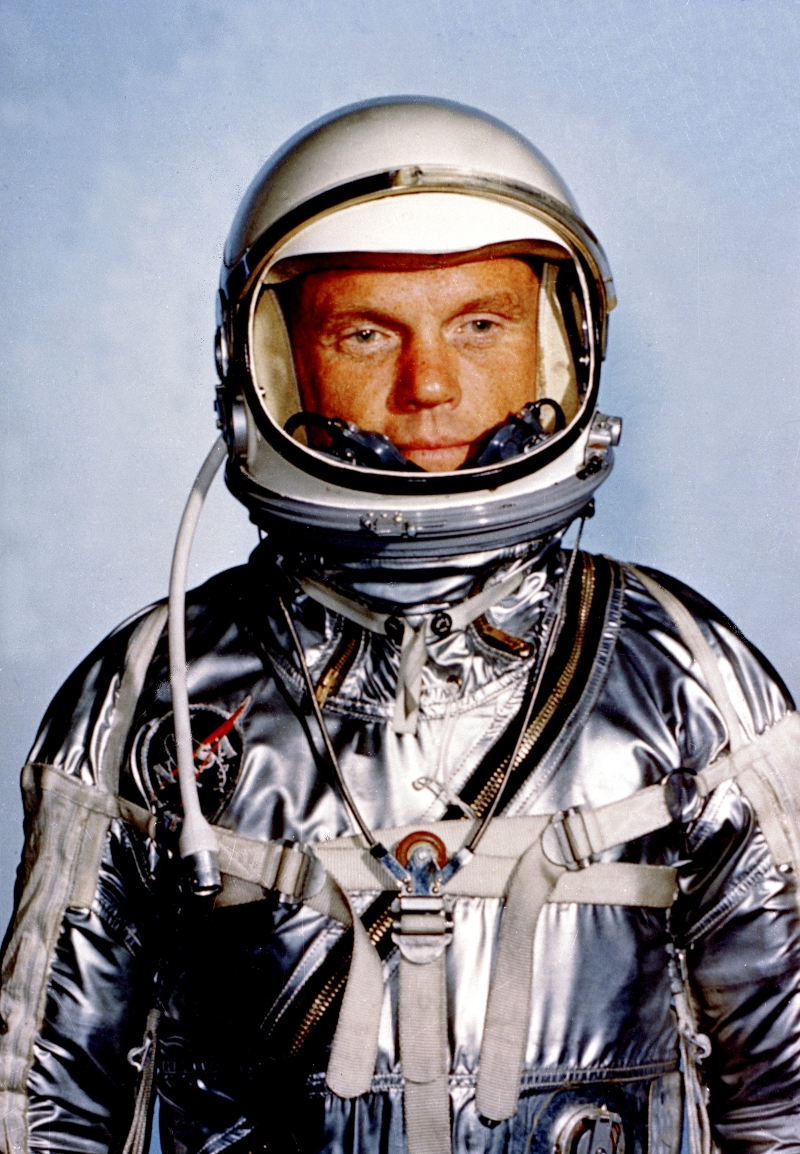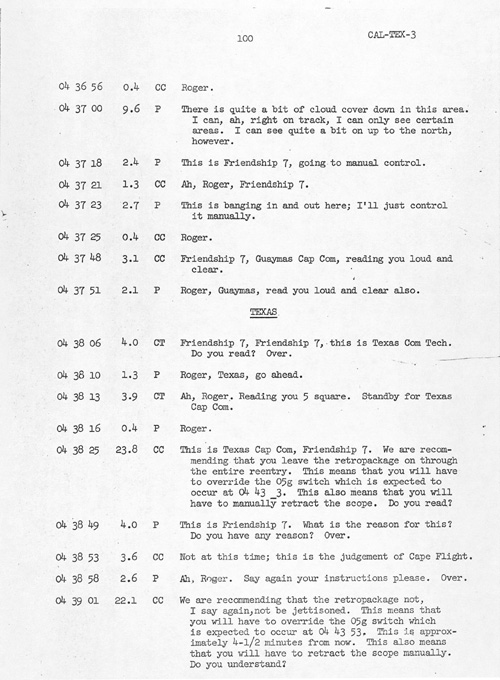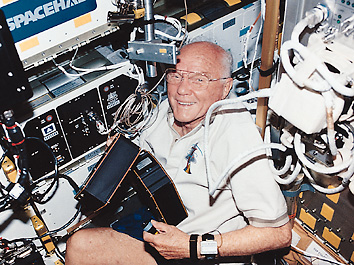Glenn, John Herschel, Jr. (1921-2016), was the first American astronaut to orbit Earth . On Feb. 20, 1962, he circled the planet three times in less than five hours. Millions of people watched on television as an Atlas rocket carried the spacecraft Friendship 7 into the sky.

The success of Glenn’s flight helped overcome fears that the United States lagged behind the Soviet Union in the race for space . In 1961, two Soviet cosmonauts made the first orbital flights around Earth.
Glenn resigned from the astronaut program in 1964. He won election to the U.S. Senate from Ohio in 1974 and was reelected in 1980, 1986, and 1992. Glenn tried to win the 1984 Democratic presidential nomination, but failed. He decided not to run for reelection to the Senate in 1998.
Early life.
John Herschel Glenn, Jr., was born on July 18, 1921, in Cambridge, Ohio. He grew up in New Concord, Ohio. In 1939, Glenn entered Muskingum College in New Concord. He left college in 1942—during his junior year—-to become a U.S. Marine Corps pilot in World War II . Later, Glenn attended classes at the University of Maryland . As a result of credits from these courses and work in the space program, he received a Bachelor of Science degree in chemistry from Muskingum College in 1962.
Soon after Glenn received his commission in the Marine Corps, he married Anna Castor, his hometown sweetheart. They had two children, John David and Carolyn Ann.
During World War II, Glenn was a pilot in the Pacific Theater. He flew 59 missions supporting ground troops. During the Korean War (1950-1953), Glenn flew 90 combat missions and shot down three enemy planes. He earned a total of five Distinguished Flying Crosses and 19 Air Medals. After the Korean War, Glenn became a test pilot. He made headlines in 1957 when he set a transcontinental speed record, flying from Los Angeles to New York City in 3 hours 23 minutes.
In 1959, Glenn and six other men were chosen from 110 test pilot volunteers for the Mercury program. This program had the goal of putting an American into space. Glenn, the oldest member of the group, served as “backup pilot” in 1961 when fellow astronauts Alan B. Shepard, Jr. , and Virgil I. Grissom each made suborbital flights.

Glenn’s historic flight
lasted 4 hours 55 minutes from launch to landing. His spacecraft lifted off from Cape Canaveral , Florida, at 9:47 a.m. (EST) on Feb. 20, 1962. It made three orbits of Earth, each one about 11/2 hours long, and traveled 80,966 statute miles (130,302 kilometers). During the flight, the spacecraft’s altitude ranged from 98.9 to 162.5 miles (159.2 to 261.5 kilometers).


After crossing the Atlantic Ocean, Friendship 7 flew over Africa, the Indian Ocean, and Australia. Then the spacecraft sped over the Pacific Ocean, the West Coast of the United States, and back again over Florida. Eighteen radar stations around the world kept track of the spacecraft. Because he was circling Earth, Glenn traveled from daylight to darkness and back in less than two hours.
Trouble occurred near the end of the first orbit when the spacecraft passed over the tracking station in Guaymas, Mexico. Up to this point, the spacecraft’s attitude (position in space) had been controlled automatically. Friendship 7 began to swing to the right. During the rest of the flight, Glenn held the spacecraft in its proper position using the vehicle’s manual controls. He was probably the first human being to “fly” a spacecraft manually for any length of time.
At 2:20 p.m., 41/2 hours after the launch, the spacecraft’s retrorockets fired, slowing the vehicle so that it would drop out of orbit and plunge into the atmosphere. At about 2:30 p.m., the spacecraft’s main parachute opened. Five minutes later, the parachute lowered Friendship 7 into the Atlantic Ocean, near the Caribbean Islands. The spacecraft landed at 2:43 p.m. About 15 minutes later, the U.S. destroyer Noa picked up the spacecraft with Glenn still inside. At 3:24 p.m., he crawled out of Friendship 7.
Later career.
In January 1964, Glenn resigned from the astronaut program, and he entered the Ohio primary as a Democratic candidate for U.S. senator. But he withdrew after injuring his inner ear in a fall. Glenn became a colonel in 1964. He left the Marines in 1965 and entered private business. He also became a consultant for the National Aeronautics and Space Administration (NASA) . In 1970, Glenn again entered the Democratic primary for the U.S. Senate, but lost. In 1974, however, Glenn won election to the Senate from Ohio.
In the Senate, Glenn opposed the proliferation (spread) of nuclear weapons . He was the author of the Nuclear Nonproliferation Act of 1978, which prohibits the sale of nuclear equipment to nations that have no nuclear weapons. Glenn favored increased federal aid for education and new federal training programs that prepare people for jobs requiring certain skills. He also backed federal aid to such industries suffering from financial problems as the steel and automobile industries.
Glenn criticized many of President Ronald Reagan ‘s foreign and domestic policies. In April 1983, Glenn became a candidate for the 1984 Democratic presidential nomination. But he quit the race after failing to win any early primary or caucus elections. Glenn was chairman of the Senate Governmental Affairs Committee from 1987 to 1995. In January 1998, NASA announced that Glenn had been chosen to return to space.
Glenn returned to space in October 1998 aboard the space shuttle Discovery. He took part in experiments dealing with physical problems experienced by astronauts in space and elderly people on Earth. Glenn was 77 years old at the time of the mission, making him the oldest person ever to take part in space travel. He died on Dec. 8, 2016.

See also Mercury .
